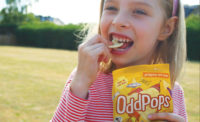3 Things to Keep in Mind When Developing Packaging

Traditionally, most consumer goods companies have been obsessed with the Moment of Truth at shelf — the approximately 4 seconds a brand has to breakthrough and make an impact on purchase decision. Fast forward to 2022, and the impact of COVID, ecommerce and environmental aspirations have changed how your consumer package should address new consumer needs — without compromising the importance of the basics in achieving breakthrough and driving purchase.
With packaging always being such a vital component of a brand’s success, at buzzback, we have collated years of data, 1000s of pack tests and strategic thinking from over 20 years of looking at packaging trends across several markets and various stages of pack development.
Here is some of what we have learned.
1. Brand Equity
The design of a pack is a key, defining element. What is your brand equity? What does your brand stand for? And if it’s a new brand, where do you want to go? What’s the positioning and brand impact you want to yield? You need to determine this first to make sure your pack aligns with your brand.
Develop a design to both create distinctive assets for your brand and clearly communicate what your product is and why people should buy it. A classic example of distinctive assets in packaging is Coca Cola’s iconic bottle.
Using colors strongly links to your equity and consumer brand emotions, as color is one of the most memorable features for your pack. You must understand how color elicits feelings and choose a brand-consistent, visually appealing palette.
Make sure your brand’s logo is noticeable and easy to read, together with the key information about the product. You need to understand how a consumer ‘reads’ your pack, what it is communicating, and in what order. For example, legibility may be improved if you only use one or two font types, make sure they’re on brand and appropriate for your target. Next, think about what you want to communicate about your product’s claims and benefits. Seventy percent of consumers read labels today. Claims are both a key way to inform and support product differentiation.
Less is more. White space can be a precious ally, by using it properly, your design won’t look overcrowded and will be less confusing. Consider the shelf space your product shares. Test in a mock shelf environment to gauge impact. If you’re trying to stand out, you don’t want to look like everyone else and keeping it simple really works. Also consider an online environment — some categories skew as high as 50-60% purchases online. With the impact of COVID, more consumers are buying online, or hybrid. In each case, your pack needs to clearly differentiate your product.
Pack form also plays a role in product experience and usage. Think about materials, form, size and sealing and how consumers interact with what’s inside.
And from the start, get alignment from your stakeholders: designers, brand managers and shopper teams. By sharing consumer expectations and feedback, you can often make fact-based rather than opinion-based design choices.
2. Leverage Sustainability Trends
Sustainability and environmental concern have increasing importance — especially among Millennials. Seventy percent of respondents are concerned and somewhat involved with environmental or sustainability issues, and over 60% say sustainable products and packs reflect their values and tend to be high quality.
Does your pack address consumers’ concerns? What is your pack ‘saying’? What are key takeaways?
There is a growing effort to reduce plastic waste, as more consumers say they actively seek products with less plastic, smaller footprints or no waste when making purchasing decisions. Sixty percent identify glass jars as their favorite type of pack when it comes to food, followed by paper bags and cardboard boxes.
Overall consumers are more educated, informed, curious and connected. They want to know more at ‘point of purchase’.
3. Research Matters
We all know brands need to stand out on a crowded in-store or online shelf. You need to know exactly what your audience is looking for. What will get their attention and cause them to engage and purchase your product. Only insights can give you the answer to this question.
Consider the phase of development you are approaching and the type of research you need:
- Early-stage exploration to understand what your pack must convey about your brand, what stands out, how to play up your strengths and brand equities and how people interact with your product.
- Design evaluation of imagery & graphics, to identify which visuals drive purchase, breakthrough and communicate positioning.
- Pack form; and the package journey as well as the shopper journey — how consumers interact on shelf and then at home — how pack impacts consumption. In-home use studies with prototypes or actual pack designs will shed light on overall experience.
Keep your finger on the pulse of consumers’ wants and you’ll be able to deliver a pack that is hard to ignore.
Looking for a reprint of this article?
From high-res PDFs to custom plaques, order your copy today!





